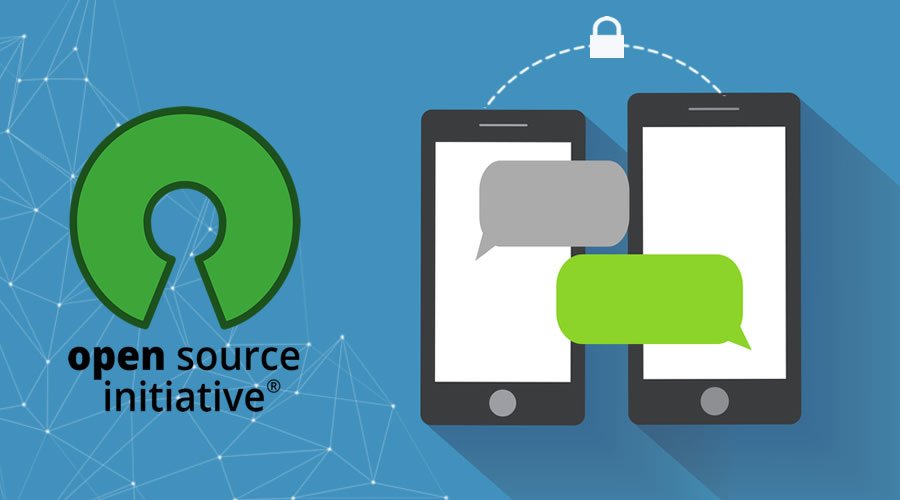Latest UpdatesRecent Stories
Gen Z Prefers TikTok and YouTube Over Google for Searches, Study...
Gen Z prefers TikTok and YouTube for searches, not Google. They like the real, varied information on social media. Google is creating new AI tools to...
10 Best Photo Editor Apps for Android and iOS in 2024
We all love taking photos with our smartphones, right? But sometimes, they just don't look as cool as we'd like. Sometimes the lighting is...
13 Best Open-Source Encrypted Messaging Android Apps For Privacy Concerned People
Nowadays almost every famous chat apps available for Android supports encrypted messaging. However, some of them are owned by tech giants like Facebook tends us...
5 Ways To Deal With Google Storage Running Out Of Space
Many of you who rely on Google Drive has probably received a warning message telling you that Google storage running out — it has...
From Window Displays to Checkout Counters: Components of Successful Retail Merchandising
In the world of retail, successful merchandising is key to attracting shoppers, boosting sales, and fostering brand loyalty. Whether it’s eye-catching window displays or...
Android Unveils New ‘Find My Device’ Network to Locate Lost Devices...
Android’s ‘Find My Device’ forms a global network for locating devices even when they are offline. It mirrors Apple’s Find My feature, making it user-friendly...
Top 10 Mobile Apps for Pet Owners
Are you someone who loves their furry friend and wants to provide them with the best possible care? We've put together a list of...
Google Considers Paid Subscription for Advanced AI Search Capabilities
Google is reportedly considering the introduction of a premium subscription service for its search engine, aiming to unveil a new revenue stream. According to...
12 Best Android Prank Apps To Fool Your Friends
Humor and pranks have found a new playground in the realm of smartphone apps. Android users, in particular, have a plethora of options to...
The Growing Influence of Tech in Financial Markets
Technology has become an inseparable part of our lives, permeating every aspect of our daily routines. Unsurprisingly, the finance industry has also been greatly...
10 Best Productivity Apps for Android and iOS in 2024
It is now easier than ever to stay organised and boost productivity, thanks to the increased demand for productivity apps for Android and iOS....
FTX’s Sam Bankman-Fried Gets 25 Years in Prison for Multi-Million Dollar...
Sam Bankman-Fried, the former executive director of the now-defunct FTX exchange, has been sentenced to 25 years in prison. The sentencing, which took place...
10 Alternatives to Android and iOS You Should Know
The duopoly of Android and iOS dominates the world of mobile operating systems, leaving little chance for other platforms to make a substantial influence....
How Software Development Can Change Education?
In today's robust digital era, technology has become an integral element of every aspect of our lives, including education. As the world evolves, so...
23 Best Challenging And Hard Android Games You Should Try In...
Get ready to get frustrated because you are going to play some really hard Android games on your device. Challenging and hard Android games are always been...
Epic Games Store to Launch on iOS and Android by Year-End...
Epic Games announces its plans to launch the Epic Games Store on iOS and Android platforms by the end of 2024. According to a post on...
Android 15 to Enable SMS and MMS via Satellite Networks
Second developer preview of Android 15 has unveiled the ability to send and receive SMS messages via satellite connections. According to the change log, Android 15...
10 Best Helicopter Games For Android And iOS
Flying in a real helicopter can be quite difficult, but these games make it possible to experience it virtually. Here are some of the...
5 Best Apps To Send Files Between Android And iOS
Android and iOS are great in terms of features and usability. However, it is quite a difficult task for novice users to send files...
10 Best Scanner Apps for Android And iOS to Digitize Documents
With the best scanner apps for Android and iOS, your smartphone can morph into a high-tech scanner, capturing and digitizing everything from official documents...
Bitcoin’s Price Soars Ahead of Halving: Is the Surge Already Factored...
Historical patterns suggest that Bitcoin's price typically hits a peak about a year after a halving. However, the recent surge to new all-time highs,...
Apple Deepens AI Investment with DarwinAI Acquisition
Apple has acquired DarwinAI, a Canadian startup renowned for its innovative AI solutions, particularly in the manufacturing sector. DarwinAI, founded in 2017 by alumni from...
Meet Devin: The AI Tool Mimicking Human Developers to Automate Coding...
Cognition Labs, a pioneering startup, has recently unveiled its new AI model named Devin, specifically engineered to perform programming tasks with a level of understanding and...
12 Best Educational Android Games for Kids in 2024
As a parent, you may have noticed that your children spend a lot of time on their smartphones. However, what if I told you...
Personalize Android For Older People: 8 Best Android Launcher Apps For...
How to personalize and configure Android so that it can be used by the elderly or older people? The first thing that pops up...


























